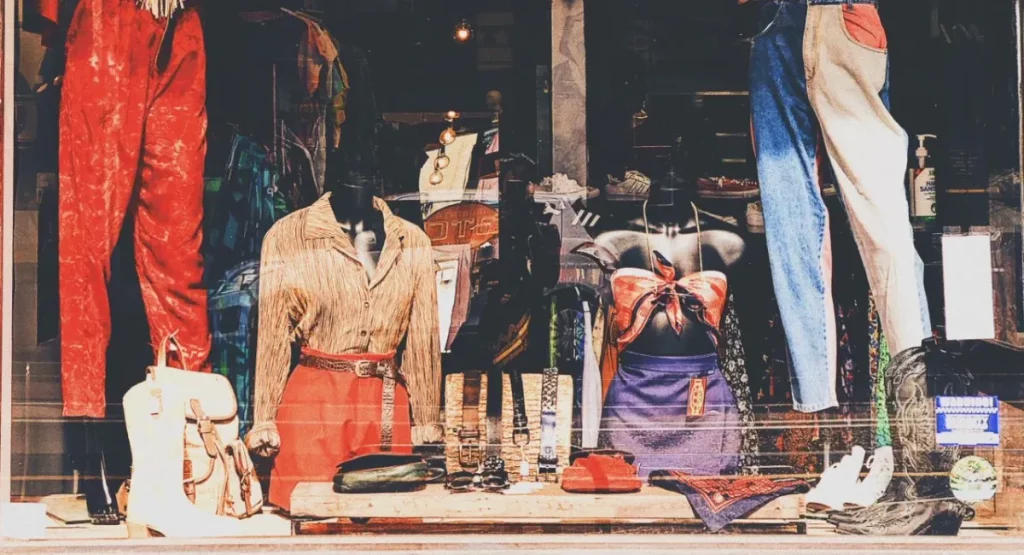No products in the cart.
Blog
Styling With Nostalgia And The Charm Of Yesteryears: What Is Vintage Clothing?
In fashion, the term “vintage” often echoes, inspiring a sense of nostalgia and classic elegance. But what is vintage clothing? This question baffles many, with some perceiving it as merely another term for secondhand garments, while to others, it represents a style era that’s come back into vogue.
In this blog post, we will demystify the concept of vintage clothing, delving into its definition, origins, and distinct characteristics. We aim to empower you with knowledge so that the next time you scour through a vintage shop, you’ll do so with confidence and insight. So, let’s embark on this sartorial journey together.
Vintage Clothing Overview
Definition Of “Vintage”
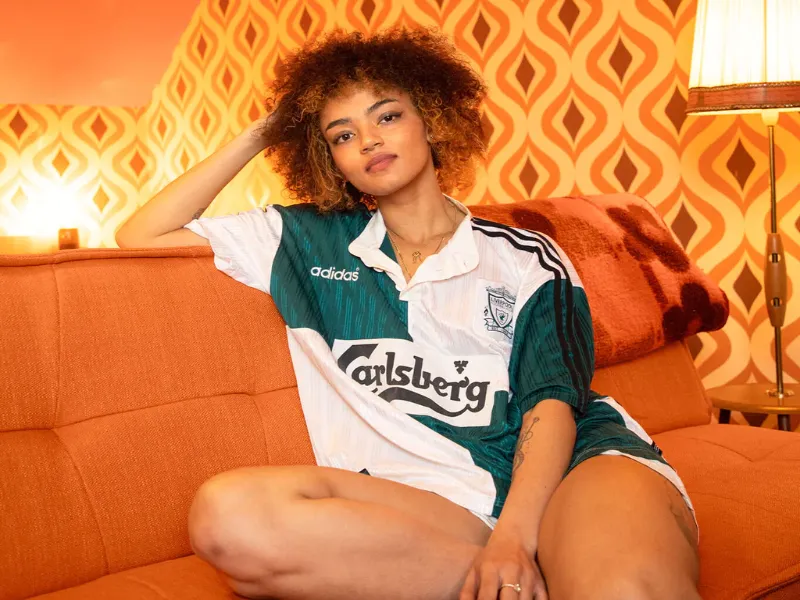
Let’s delve into understanding the term “vintage.” According to the Cambridge dictionary, “vintage” signifies items produced and symbolic of a specific past era. It’s a broad term encompassing various items ranging from cars and books to dresses and lamps.
In fashion, “vintage” typically refers to clothing styles from 20 to 100 years ago. Such items are cherished to reflect the fashion trends and styles of the era they originate from. Vintage clothing carries a rich tapestry of history, sparking nostalgia and appreciation for craftsmanship often missing in modern items.
Antique clothing is generally considered over 100 years old, differentiating vintage from other categories. Meanwhile, the term “retro” denotes clothing that emulates the style of a previous era. Another category, “reproduction” or “repro,” refers to new clothing items created to mimic the design of an older garment.
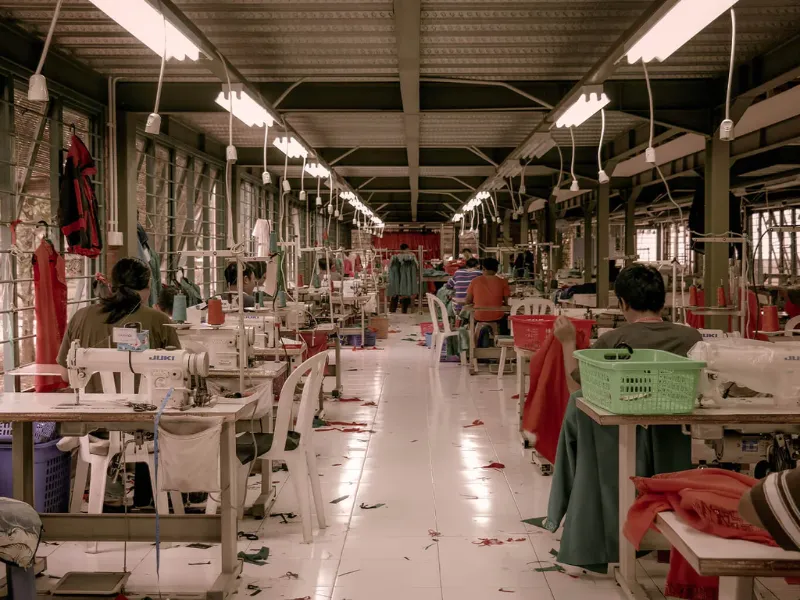
Clothing manufactured in recent times usually falls under modern or contemporary fashion categories. Understanding these definitions can help to appreciate the unique charm and value of vintage clothing.
About “Vintage Clothing”
Vintage clothing, referring to outfits dating back to as recent as the 1990s, is a broad term that encapsulates garments from past eras. This term also applies to retail outlets specialising in selling secondhand merchandise, such as vintage clothing stores.
The practice of vintage dressing emerged during World War I in response to textile shortages and now includes the art of skillfully blending accessories, new clothes, and vintage pieces from different styles and periods into a unique ensemble. High-end name brands sell vintage clothes at quite affordable prices.
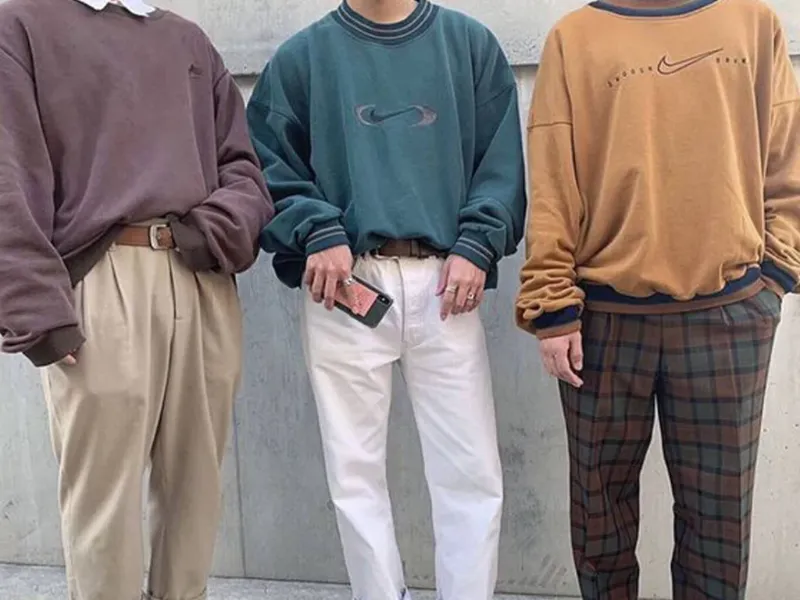
You can find vintage clothing in local boutiques or charity stores in cities or online on platforms like digital secondhand shopping sites.
Since the 21st century, vintage fashion has witnessed a revival in popularity. This resurgence can be attributed to the increased visibility of vintage pieces in the media and among celebrities and the growing consumer interest sustainably and slowly.
[amazon bestseller=”vintage clothing” items=”10″ ]History Of Vintage Clothing
Before the era of large-scale manufacturing, clothing production largely relied on meticulous handiwork. Practicality dictated the attire of farmers and labourers. To optimise usage, clothing was mended when necessary with multiple layers of patches.
If still presentable, used clothing could be altered to fit a new owner. If irreparable, the garments were reduced to scraps for quilts, braided rag rugs, or cleaning rags.

During the First World War, the US initiated a conservation drive, promoting the economy as a fashionable choice and resulting in around a 10% decrease in wartime waste.
As we moved into the 20th and 21st centuries, vintage clothing gained recognition in media and pop culture. The fashion industry’s constant demand for novelty transformed erstwhile secondhand clothing into sought-after vintage attire. Increased media visibility, along with celebrity influence, contributed to this shift.
Over the past 2 decades, vintage fashion has graced major fashion magazines, with a notable feature in the 2011 edition of Marie Claire. Period pieces in film and TV have also influenced vintage fashion trends.
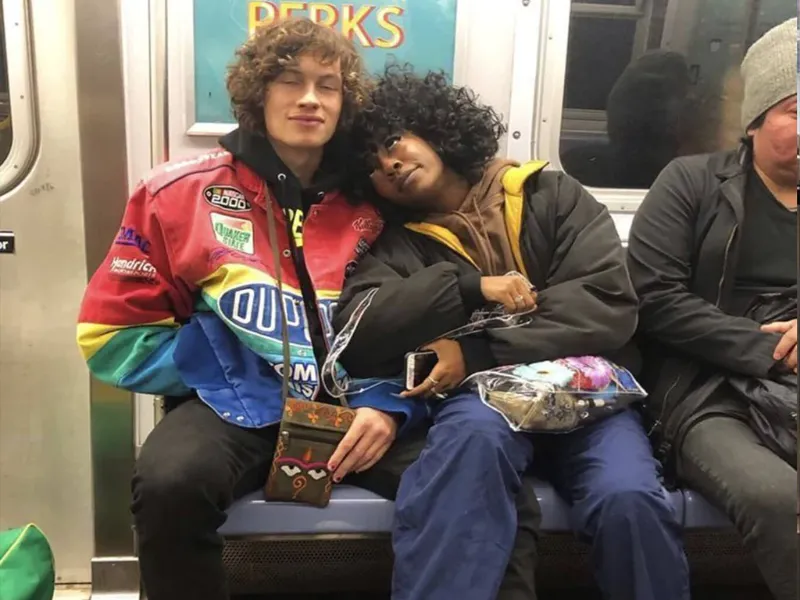
For instance, the 2007 series Mad Men’s authentic 1960s fashion triggered a wave of retro glamour, influencing 2010 runway trends and boosting vintage shop sales. Celebrities like Reese Witherspoon and Renee Zellweger further popularised vintage clothing by flaunting vintage pieces on the red carpet.
The past decade has witnessed vintage clothing becoming synonymous with environmental sustainability and ethical fashion. It embodies slow fashion principles, a term coined by Kate Fletcher in 2007, which emphasises reusing, recycling, and repairing items.
The trend of vintage shopping has evolved with the digital age, with platforms such as Depop, ThredUp, and TheRealReal pioneering the online vintage clothing market.
New retailers venturing into this sector face unique challenges. Authenticity and exclusivity, valued by vintage clothing consumers, are paramount.
Knowledge and disclosure of the clothing’s origin are critical to the vintage clothing retail industry’s success.
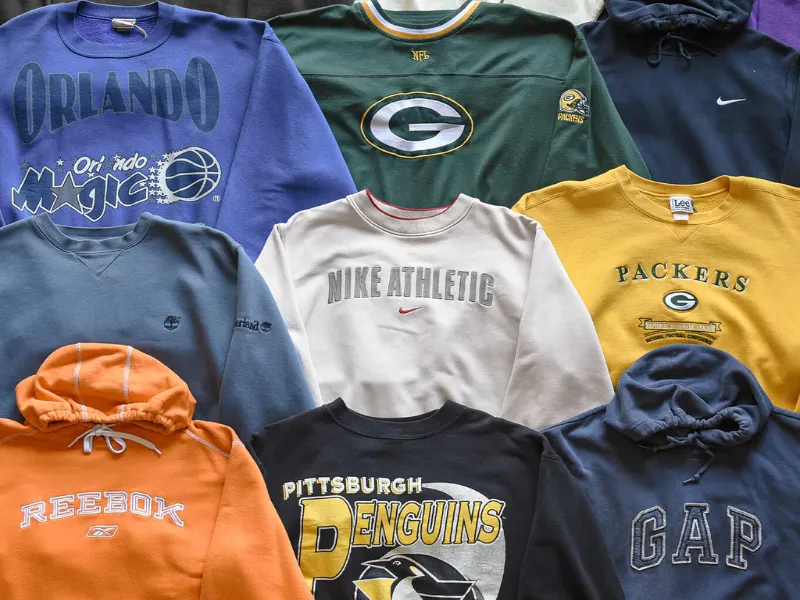
Vintage clothing owners often cherish their purchases. While some wear vintage items regularly, others perceive them as valuable additions to their collection, rarely worn but greatly admired. Some keep these garments for extended periods, while others choose to repurpose, repair, or pass them on.
Subcultures with historical roots, such as rockabilly and swing dancing, have also fueled interest in vintage clothing. For instance, in Finland, a shared passion for preserving material culture and the environment led to the establishment of a non-profit organisation called Fintage.
Benefits Of Choosing Vintage Clothes
Vintage clothing, a term that resonates with sustainability and uniqueness, is a profound preference for many. What makes a piece of clothing vintage? It’s an ensemble that has stood the test of time, not only in terms of durability but also in style.
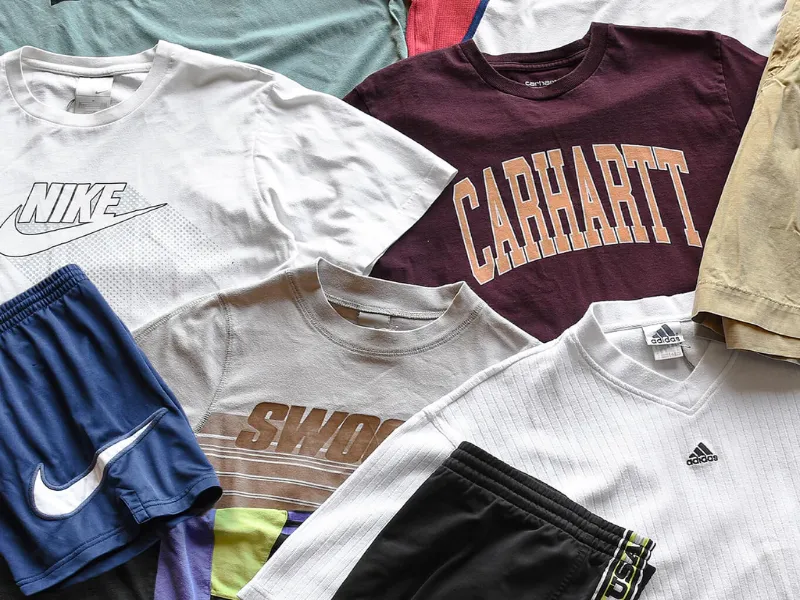
It is clothing with a high-quality blend of fabric and craftsmanship designed to outlive fashion’s ephemeral seasons. This is why many fashion activists advocate for vintage shopping, as it’s an environmentally friendly approach to fashion consumption.
Each piece of vintage clothing signifies a reduction in landfill waste, conserving the water and natural materials that would otherwise be used to produce new garments.
It’s a celebration of a clothing love affair that cherishes the clothes and our planet. Secondhand items, including those no longer in production, carry an exclusive value, offering you a distinctive style that is irreplicable.
Imagine walking into a social gathering adorned in a one-of-a-kind vintage outfit — an ensemble that no one else possesses. This is the allure of vintage clothing; it guarantees uniqueness.
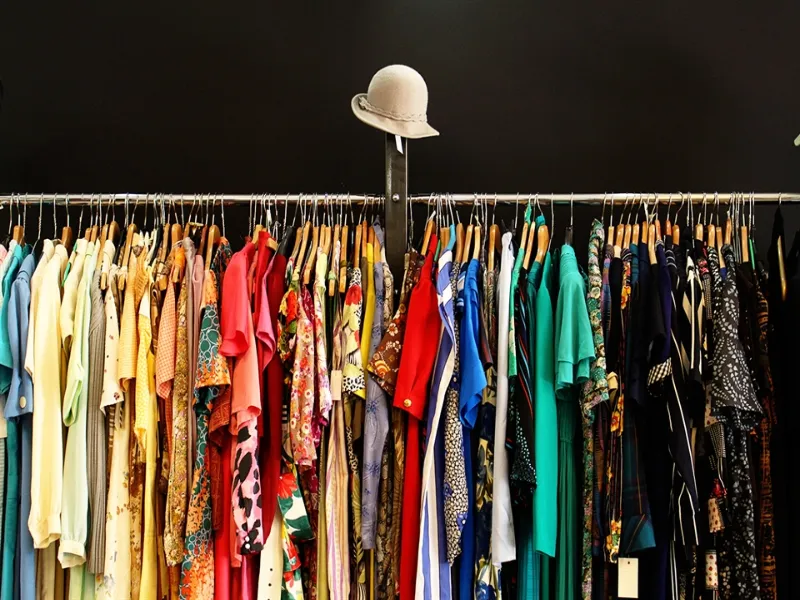
Moreover, some vintage items, like the perpetually in-vogue trench coat, serve as wonderful gender-neutral fashion options.
Interestingly, even after you’ve exhausted their charm for yourself, vintage styles can easily be resold, continuing the cycle of fashion activism.
Another shopper relishes the sustainable joy of owning a unique piece of clothing. This cycle of passing on clothing ensures that fashion remains stylish and planet-friendly.
But what about the cost? You might be surprised to learn that vintage clothing, even those from luxurious brands like Dior or Louis Vuitton, can often be procured at a significantly lower price than new clothes.
Picture discovering a classic piece from Gucci that doesn’t necessitate draining your bank account — such treasures are a daily occurrence at Vestiaire.
With vintage shopping, your preferences are not limited by time frame. You might be hunting for vintage or retro outfits; it doesn’t matter.
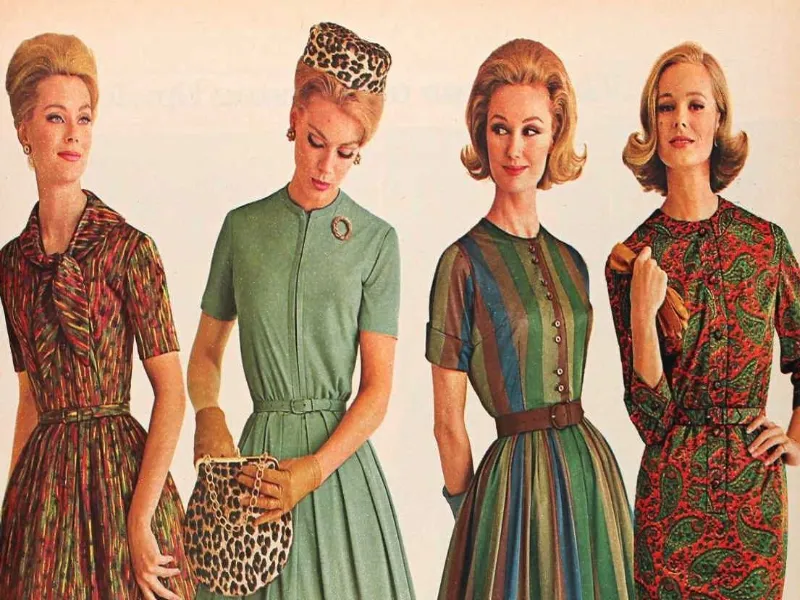
With the help of appropriate filters, your quest for vintage finds is made simple and enjoyable. That’s the beauty of vintage shopping — it’s often a joyful journey of discovery, wherein you don’t know what you want until you stumble upon it.
From an environmental perspective, vintage clothing typically trumps retro, as it doesn’t necessitate the production of new items. However, shopping at Vestiaire Collective positively impacts sustainable shopping, thanks to our commitment to secondhand items.
Fashion is a powerful tool; secondhand clothing amplifies that power while contributing to environmental conservation. It’s not just about a trendy wardrobe; it’s about making choices that are kinder to our planet and your wallet.
Let your style reflect a bygone era, and find joy in saving money, making sustainable choices, and discovering unique pieces. This is the essence of vintage and secondhand shopping at Vestiaire Collective — a harmonious blend of style, sustainability, and affordability.
What Is Vintage Clothing? – Fashion Through the Ages
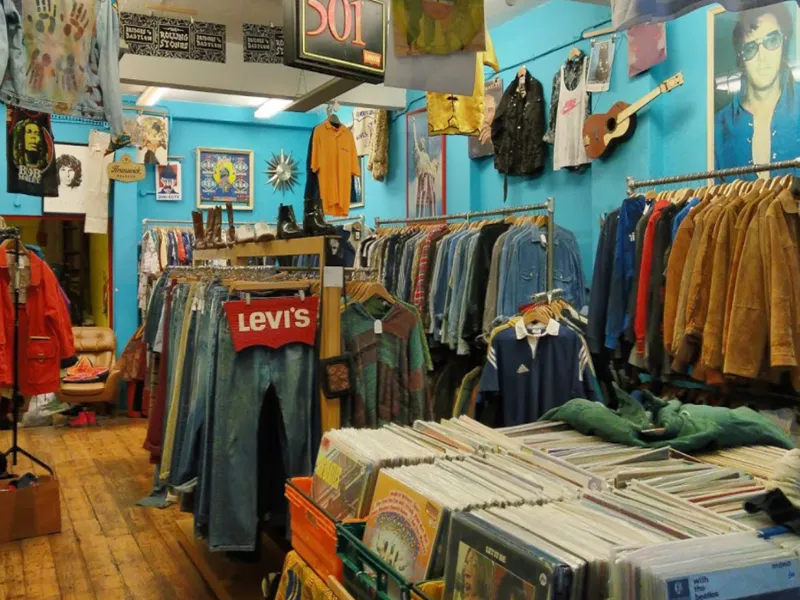
Fashion trends, like history, have a way of repeating themselves. Few styles become iconic enough to define an era forever immortalised as vintage fashion.
Let’s take a journey back in time, revisiting some groundbreaking styles that have stood the test from the 1920s to the 1990s.
The Roaring 1920s
The 1920s were a revolution in fashion. The flapper style took the Western world by storm with slip-over dresses and drop waists. Fashion accessories of the era boasted strings of beads and T-strap shoes complemented by Mary Jane heels.
The Elegant 1930s
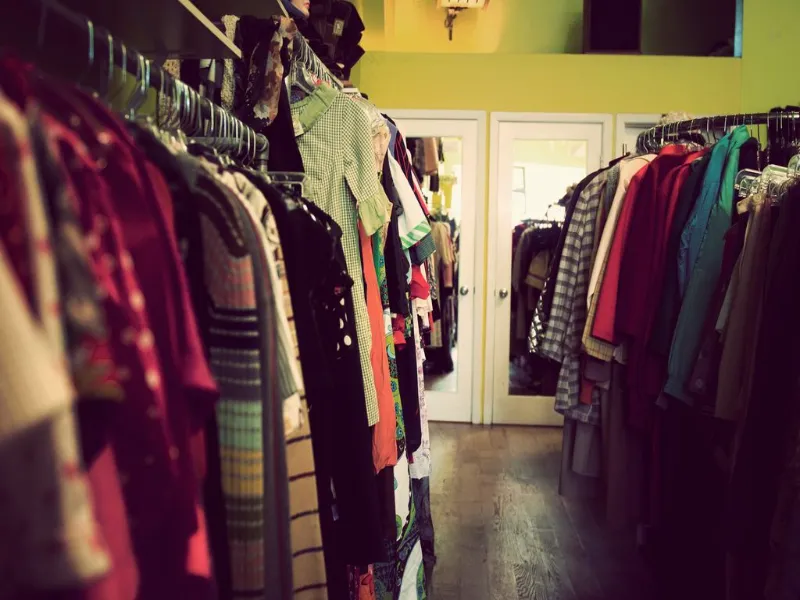
The 1930s fashion brought a new wave of elegance, presenting puffy sleeves and bolero jackets. Fedora hats and trending shoes like Oxfords, peep-toes, and slingbacks became the order of the day.
The Sophisticated 1940s
Straight wool skirts in plaid and tweed, brooches, and platform shoes characterised fashion in the 1940s. Also, handbags made from rare animal skins were seen as a symbol of sophistication.
The Ladylike 1950s
The 1950s revered female elegance and natural curves. The decade is remembered for iconic styles like shirtwaist dresses, petticoats, full skirts, twin sweater sets, fur-trimmed garments, ‘Wayfarer’ sunglasses, and strings of pearls.
The Dynamic 1960s
The 1960s was a decade of 2 halves. The early 60s were defined by style icons and their clothing items, like pillbox hats and box-jacket suits.
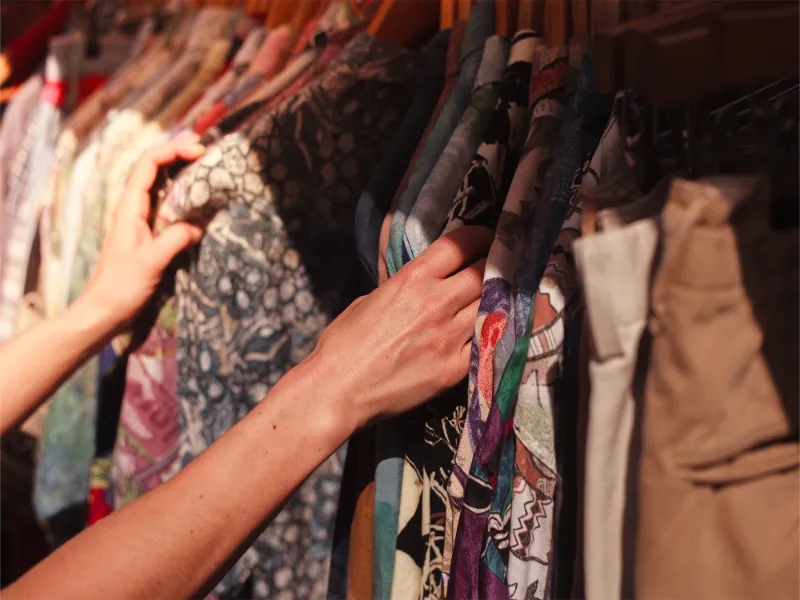
Influenced by the counterculture movement, the latter half brought in flowing tops, bell-bottom jeans, and bohemian garments with Asian cultural influences.
The Bohemian 1970s
The 1970s continued the boho-chic style introduced in the 60s. The decade is known for flare jeans, high boots, platform shoes, block heels, and the now-iconic Birkin bags.
The Bold 1980s
The 1980s saw fashion take a bold turn. Sweaters and blazers with shoulder pads, gold chains, Izod golf shirts, and stiletto-heeled shoes became the signature styles of this audacious decade.
The Casual 1990s
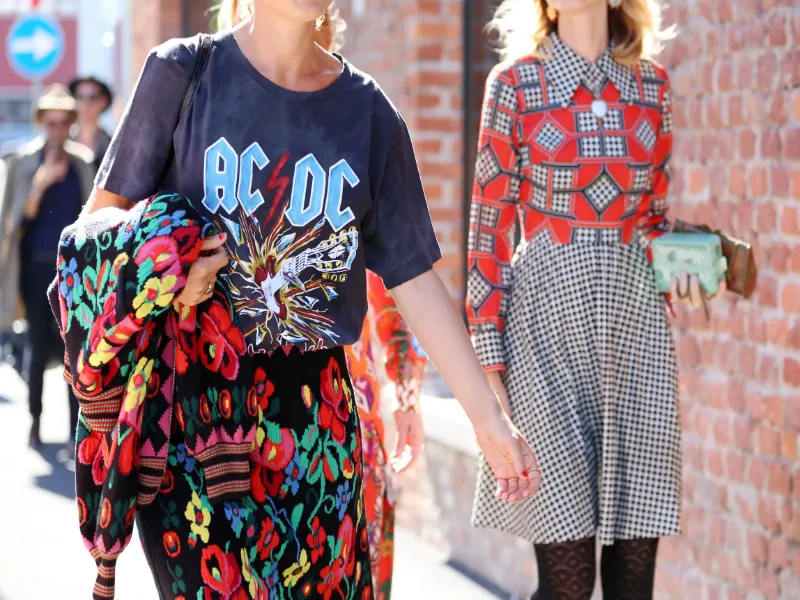
The 1990s brought a sense of casual comfort to fashion. This era saw the rise of oversized sweaters, baggy flannel shirts, leggings, and chokers, now popular pieces among vintage lovers.
So, what is vintage clothing? It’s a testament to the era it originated from, a snapshot of history that we can wear and appreciate today.
Distinguish “Vintage Clothing” Vs. Other Definition
“Vintage Inspired” Vs. “Vintage Style”
The inspiration for contemporary fashion design often has its roots in the past. Vintage clothing, distinct due to its origin from a previous era, is appreciated for its enduring and often increasing value.
The uniqueness of vintage allows buyers to express their individuality, curating a wardrobe per their tastes from an array of distinctive styles available in secondhand clothing.
Each vintage item is unique, crafted with meticulous attention to detail that adds to its enduring value.

Mass-produced counterparts, known as “vintage-inspired” or “vintage reproductions”, reflect some characteristics of the original vintage designs but typically fall short of capturing their true essence.
These garments provide a modern twist to vintage styles, offering an affordable alternative for those who admire the old style. Genuine vintage clothing often seeks out designer labels and special edition items.
Vintage fashion is a strong counter-movement to the prevalence of fast fashion. By offering unique pieces, vintage shopping empowers consumers to express their individuality. Vintage clothing tends to evoke a connection to the past, stirring feelings of nostalgia and fond memories.
Consequently, the drive to incorporate vintage style into one’s wardrobe often stems from a desire for individual expression and style distinctiveness.
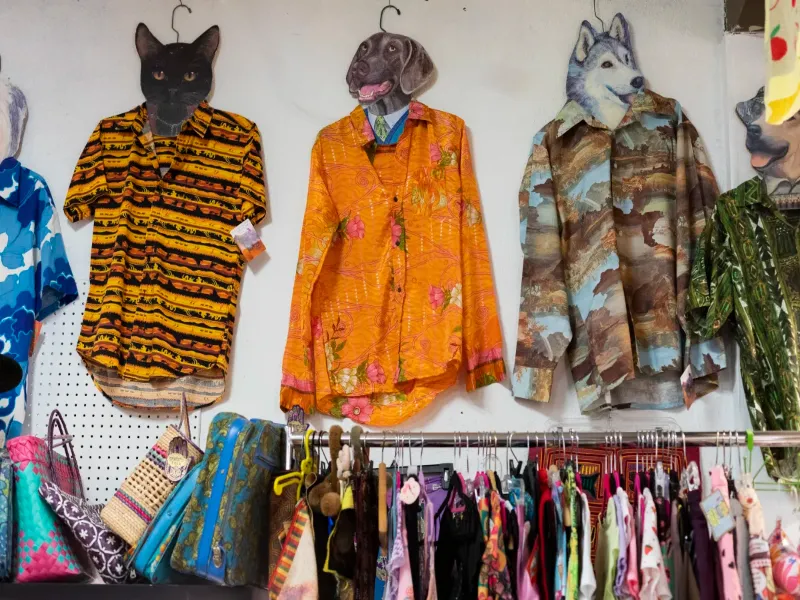
The realm of luxury clothing has also witnessed a shift towards sustainability, a movement where vintage fashion plays a vital role.
Secondhand or vintage luxury items have been gaining attention thanks to prominent influencers and celebrities who sport these pieces.
This trend advocates unique fashion and promotes environmentally friendly clothing choices, contrasting the more accessible but less sustainable fast fashion.
This revaluation of vintage clothing within society and the fashion industry has made it an attractive option for many consumers.
Owning a piece of luxury through secondhand items adds a new dimension of desirability to the market, making it accessible even for those with constrained budgets. This has opened a new pathway for the general public to immerse themselves in luxury brands.
Vintage Vs. Antique
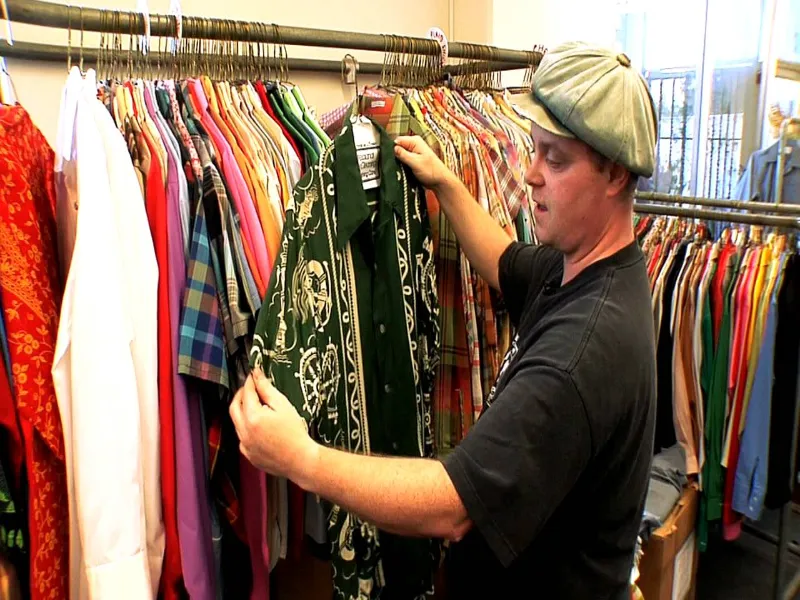
Antique defines items like clothing, jewellery, furniture, or artwork that have seen at least a century of life.
However, to label something as antique, one must authenticate its age. Labelling the item as ‘vintage’ is safer if the age cannot be confirmed.
Vintage Vs. Retro
The term ‘antique’ is typically assigned to items- clothing, jewellery, furniture, or artwork- that have existed for at least a century. However, the item’s age must be verifiable to claim its antique status. If the age cannot be established with certainty, label the item as ‘vintage’.
Fashion items, such as clothing, shoes, and accessories, inspired by older designs but manufactured in the last two decades, are termed ‘retro’.
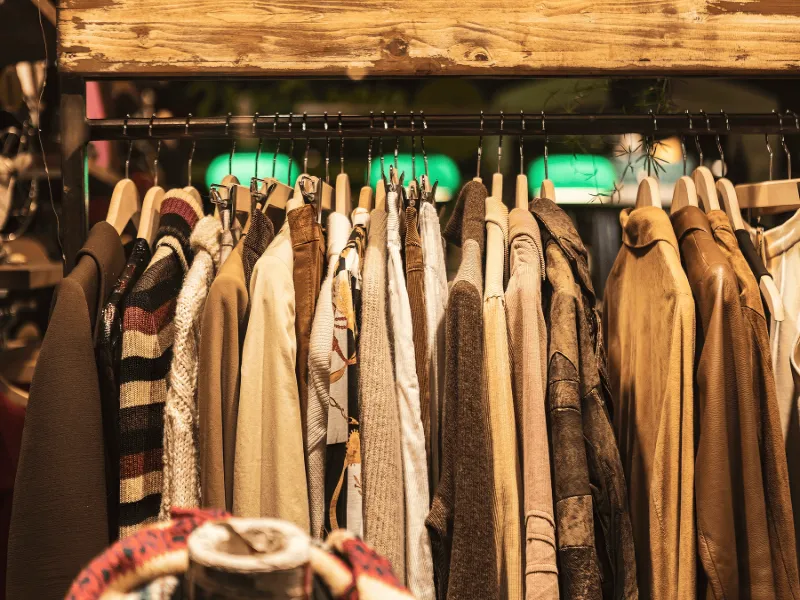
Retro fashion, drawing its essence from past styles, presents an affordable alternative to vintage or antique high fashion, with the added advantage of being more functional.
The central element of retro garments is their stylistic imitation of past eras rather than an exact reproduction. For instance, a dress modelled after the 1920s flapper style but created only five years ago is deemed ‘retro’.
But, if the dress were an original from the 1920s, it would be labelled ‘vintage’. To illustrate further, consider a 19th-century diamond brooch passed down from your great-great-grandmother – such an item would be categorised as an ‘antique’.
Vintage Vs. Classic
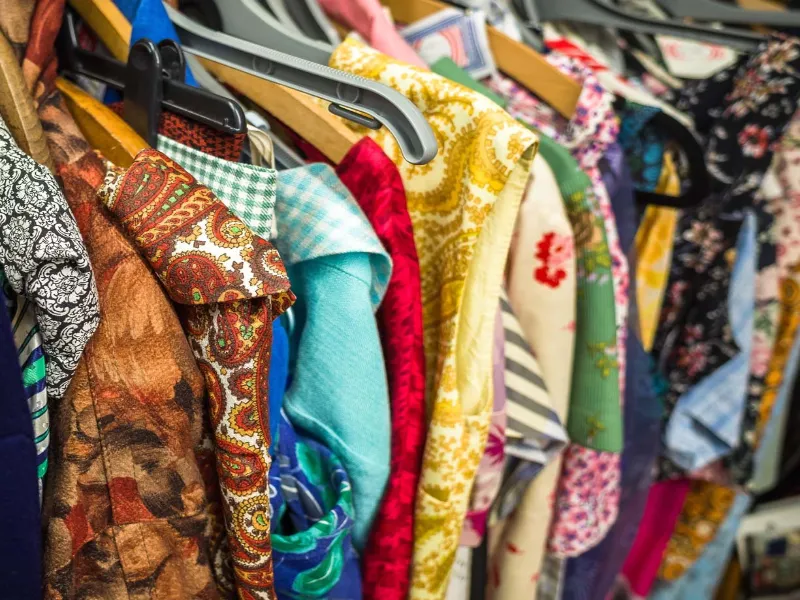
Vintage and classic styles, while often used interchangeably in fashion, carry distinct meanings. Vintage style refers to garments or accessories that mimic the look of a previous era, typically between 20 and 100 years old.
These pieces may be reproduced or thrift, but they all celebrate the unique trends of their respective decades, from the flapper dresses of the 1920s to the psychedelia of the 1970s.
On the contrary, the classic style transcends time. A classic piece is typically defined by its simplicity, elegance, and enduring appeal. It’s not tied to a specific era but remains stylish and relevant regardless of current trends.
Examples of classic style include the little black dress, a crisp white shirt, or well-tailored trousers.
Vintage Vs. Old Clothes
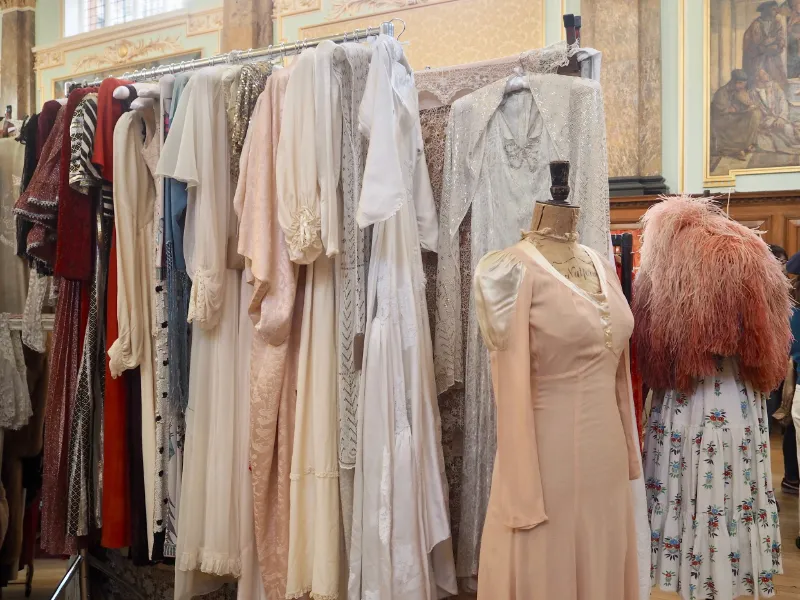
While some may conflate vintage clothing with old clothes, it’s crucial to understand the distinguishing factors that make it unique.
Vintage clothing, typically from a previous era, is cherished for its superior quality, timelessness, and exclusivity, offering a unique style that sets you apart. This starkly contrasts old and pre-owned garments with no particular historical or aesthetic value.
Vintage items are often characterised by durable fabrics and exceptional craftsmanship, indicative of their era’s fashion standards. On the other hand, old clothes can come from any era and do not always offer the same quality or style value.
Vintage shopping is not just about buying used clothes; it’s about celebrating historical fashion, making sustainable choices, and curating a unique wardrobe.
What Is Vintage Clothing? – Buying Guidelines
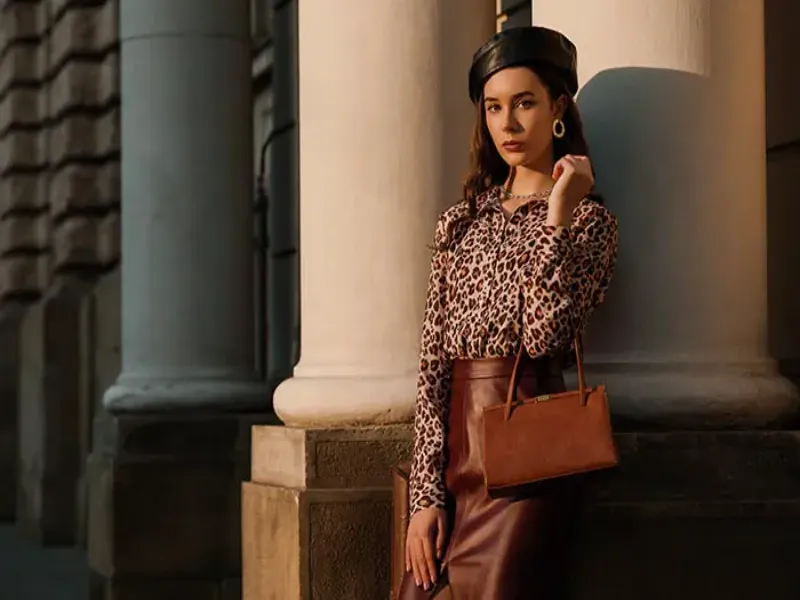
Determine Your Clothes That You Buy
Distinguishing between vintage, retro, or old clothing can often be challenging. A clear understanding requires a good grasp of fashion history, trends, and knowledge of different brands; sometimes, even that might not suffice.
If you often find yourself pondering the lineage and category of a garment while thrifting, the following pointers should prove helpful.
One of the simplest ways to ensure you’re purchasing vintage clothes is by choosing well-known vintage stores. These might come with a higher price tag than typical secondhand shops, but you can rest assured that the items on sale are authentic vintage pieces.
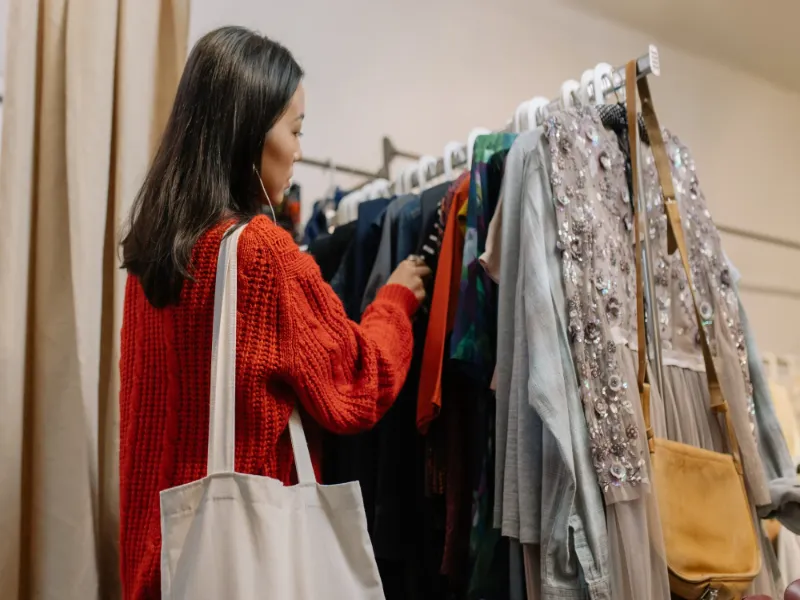
Another option is turning to a reliable reseller with a wealth of knowledge and expertise. The added benefit is the convenience – many resellers have comprehensive online catalogues, making the shopping process seamless.
The importance of doing your homework cannot be overstated. If you’re serious about expanding your vintage collection with original items, dedicate some time to research.
Every time you come across a garment that catches your eye, take the time to investigate the brand, learn more about the era it represents, and determine whether it’s genuine or counterfeit.
Keep an eye out for top-quality brands. If you want to blend retro clothing and accessories with a modern touch, consider exploring INTERTOP. Our assortment includes a variety of brands, many of which offer a blend of retro and classic pieces at reasonable prices.
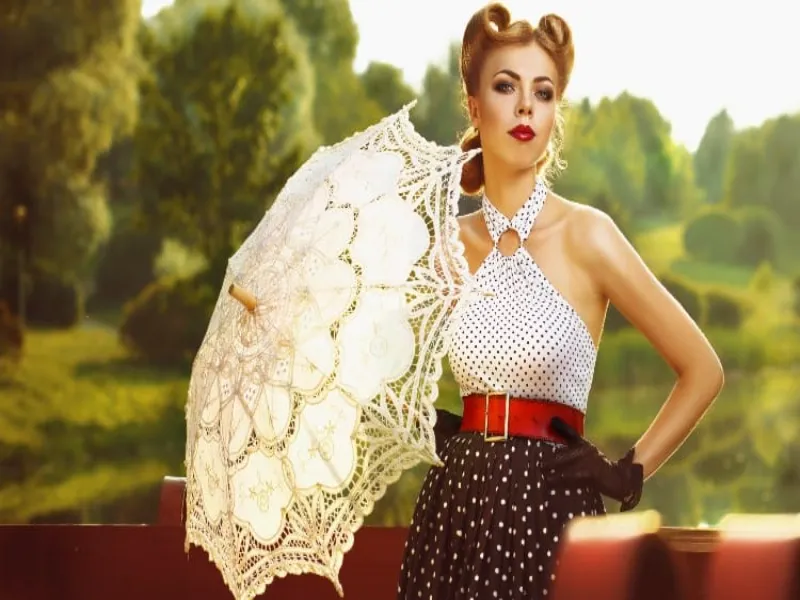
Finally, don’t be disheartened by the occasional misstep. Not all sellers are forthright about the vintage status of an item. Use these instances as learning opportunities.
Increasing your knowledge about fashion and history, fabrics, and market conditions will gradually clarify these distinctions. With time and experience, you’ll navigate the vintage clothing landscape with increasing confidence.
Identify Non-vintage clothing
Remember, just because a label claims an item to be “vintage” doesn’t necessarily make it so. Genuine vintage items usually don’t bear such explicit labelling. Also, consider the item’s origin.
A “Made in China” label could indicate a recent manufacturer if you reside in Europe or the US. Lastly, inspect the smaller details like buttons, linings, and the colouration of the fabric.
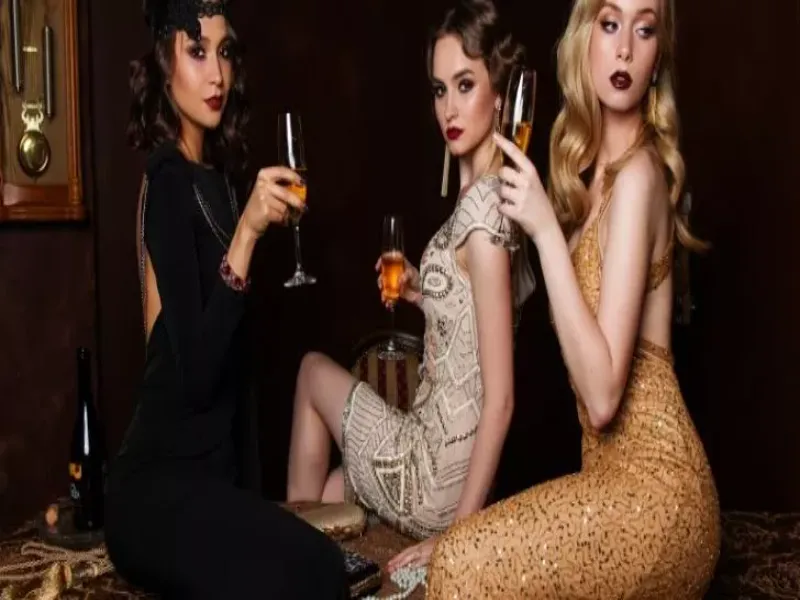
Authentic vintage clothing typically boasts quality craftsmanship and doesn’t appear inexpensively made or excessively worn out.
What To Look For When Buying Vintage Clothing?
Despite the rapid evolution of fashion trends, vintage clothing has retained its allure, captivating fashion enthusiasts with its timeless appeal and unique craftsmanship. The term ‘vintage’ is often used to describe clothing that imitates the style of a previous era.
However, vintage clothing is more than just a recreation – it’s an artefact from the past, offering a glimpse into the fashion sensibilities of bygone eras. Identifying genuine vintage garments can be a fascinating, albeit somewhat complicated, process.
Here’s a brief guide to help you in your vintage treasure hunt.
Understanding Vintage Tags
Tags are a good starting point in your search for vintage clothing. Many vintage garments were manufactured in the United States, so look for tags bearing the phrase “Made in the USA” or an American flag.
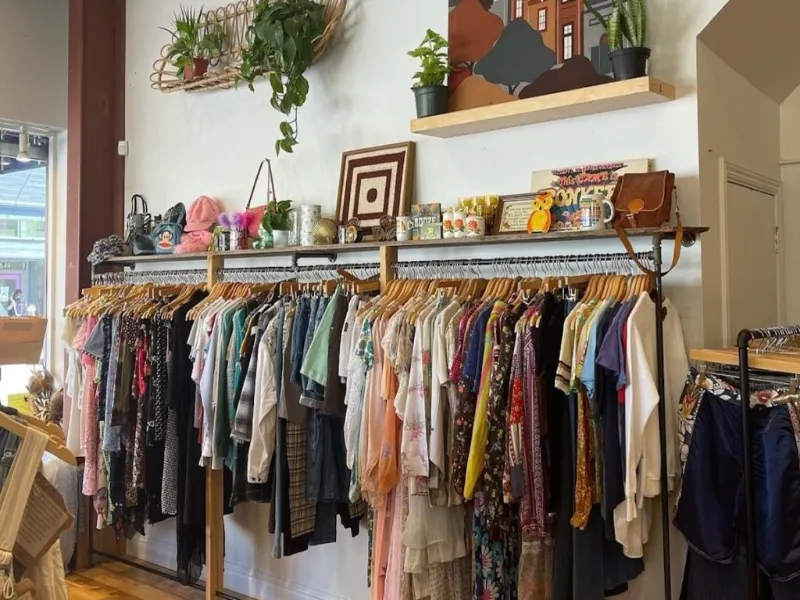
Additionally, garments made before the mid-1960s might not have a zip code on the tag, instead listing only the street and city names. Also, the garment could be vintage if the brand name is unfamiliar or the logo looks different from its modern counterpart.
Furthermore, if a wool garment doesn’t have a logo saying “Made of Wool,” it suggests pre-1939 manufacturing, as wool stickers only became a staple from 1964 onwards.
Lastly, clothes made from unblended textiles could be vintage, although this isn’t always a reliable indicator due to the use of unblended textiles in contemporary manufacturing.
Identifying Vintage Construction Features
Vintage clothing often stands out due to its unique construction features. For instance, hand-sewn details, pinked seams, side fasteners, and metal zippers were common in late 1920s and 1960s garments.
Pinked seams, supposed to look like teeth to prevent fraying, were popular in the 1950s. Similarly, metal zippers were usually featured on the side of garments from the 1930s to the 40s, while plastic zippers became prevalent after 1965.
Feeling for Vintage Textures

The texture of vintage garments can differ substantially from modern clothes, making it a crucial factor in identifying vintage pieces. If you’re new to the world of vintage, comparing a vintage item with other clothes from your wardrobe can help you spot the difference.
However, remember that sizing can be challenging when dealing with vintage clothes – a garment from the late 60s could be 4 to 6 times larger than the same size in today’s standard. Therefore, trying on a garment before purchasing it is a good practice to ensure a perfect fit.
What Items Should I Choose When Buying Vintage Clothing?
- Vintage Denim.
- Leather jackets.
- Blouses.
- Corsets.
- Dresses.
- Short-sleeved shirts.
- Cowboy hats, etc.
What Is Vintage Clothing? – Where To Buy?
Exploring Vintage Clothing in Physical Stores
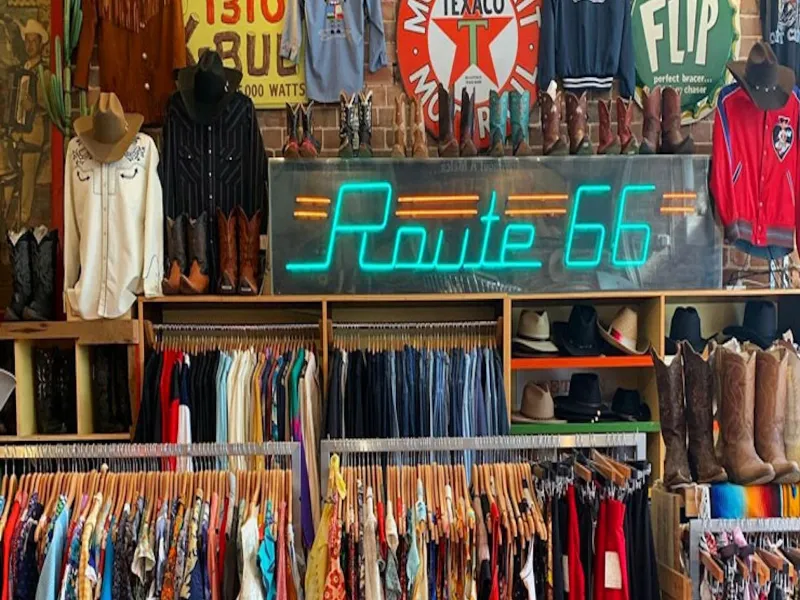
For the true vintage clothing enthusiast, nothing compares to the thrill of hunting for items in person. The opportunity to assess the condition of garments firsthand makes auctions, flea markets, thrift stores, antique stores, and estate sales worthy of exploration.
Neighbourhood sales can also yield surprising findings. A tip for novice buyers is to seek out shops where the term “vintage” appears in the name or description. While thrift stores may occasionally stock vintage pieces, their inventory is mostly old rather than vintage.
However, dedicated vintage shops offer a meticulously curated selection, and shop owners often prove excellent sources of knowledge and advice.
Discovering Vintage Clothing Online
The internet hosts a multitude of stores where vintage clothing can be procured. Poshmark, known primarily as a modern fashion platform, carries a wide price range of vintage pieces.
Here, customers can find vintage gems like mom jeans, oversized sweatshirts, and designer brands. ThredUp presents another online option with its environmental and cost-effective approach to the changing fashion industry.

The Real specialises in vintage designer clothing, as does Vestiaire Collective, which boasts an extensive collection ranging from vintage Levi’s to evening wear.
The ASOS Marketplace is a globally recognised space for independent clothing brands and vintage shops. Refashioner takes a unique approach by including a background story for each piece.
Beyond Retro, based in London, offers clothing dating from the 60s to the 90s. Finally, Etsy hosts shops like Wildthing Vintage and Frea Vintage, offering selections from the 50s to the 90s.
Besides, Amazon is also a wonderful platform to find various samples of vintage clothing with many hot deals and minimal shipping costs.
Ways To Wear Vintage Clothing
Vintage clothing can be combined with modern pieces to create a unique style that will turn heads. Combine one or 2 vintage items with contemporary pieces when creating an outfit.
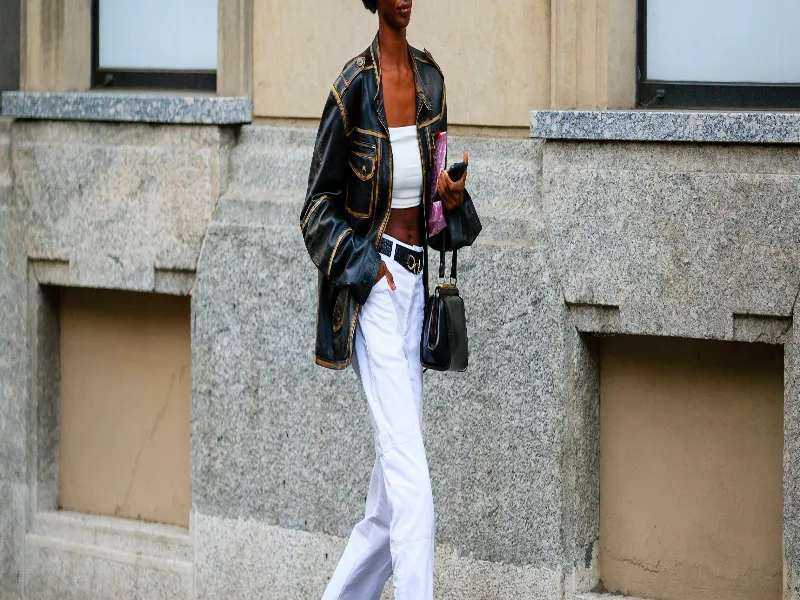
Wearing head-to-toe vintage can often be overwhelming and look dated, so pairing vintage pieces with modern items is a great way to create an up-to-date look.
Mixing prints and patterns from different eras is also a popular choice. For example, wearing a vintage blouse with contemporary trousers or styling a classic skirt with a modern top can create interesting looks that truly stand out.
Experimenting with different eras and styles is a great way to explore vintage fashion and create your unique style.
No matter what you choose, vintage clothing is always sure to add some flair to your wardrobe. With its timeless designs and quality construction, it’s no wonder why vintage pieces are so sought after.
Whether you’re looking for something special or interesting, there is something for everyone in the vintage market. So get out there and start exploring!
Tips For Caring For Vintage Clothing
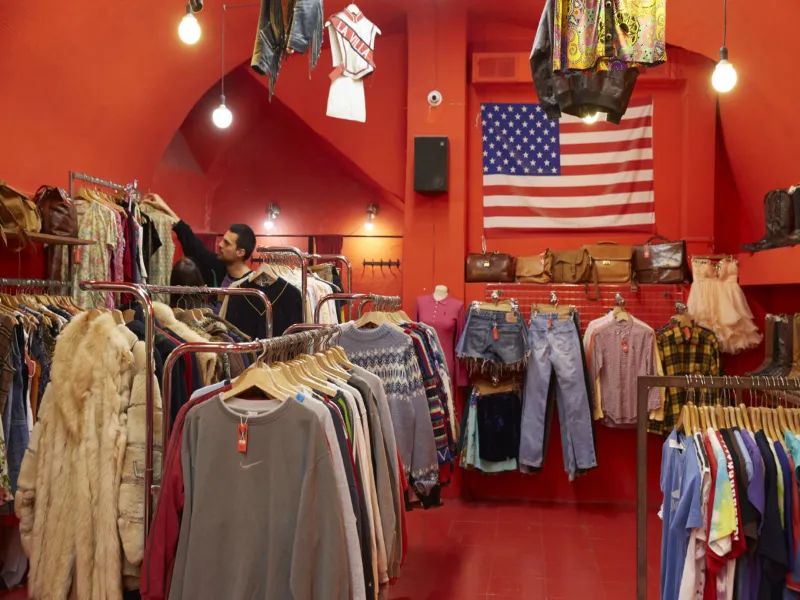
Caring properly for vintage pieces is essential to preserve them for years. Start washing the items with cold water on a delicate or hand wash cycle, and always use gentle detergents.
Avoid hanging your pieces, as this can stretch the fabric and cause sagging. Instead, lay them flat or fold them neatly when storing.
For delicate pieces like silk or lace items, dry-cleaning is often recommended. For embellishments like jewels and sequins, handwashing is best to avoid damaging the beading or embroidery. Lastly, store your vintage pieces in a clean, dust-free area.
Following these simple tips, you can continue enjoying your amazing vintage wardrobe for years.
Investing in quality clothing and caring for them properly will keep them looking their best and ensure you get many more years of use. With its unique designs, quality construction, and timeless style, vintage clothing is a great investment.

So, if you’re looking for something special or interesting to add to your wardrobe, consider browsing the vintage market. With its vast range of items from different eras, there’s sure to be something that catches your eye!
Sustainable Fashion Issue With Vintage Clothing
Fashion Industry And Environmental Pollution Problem
The paradigm of vintage fashion is deeply rooted in the broader ethos of sustainable and slow fashion, which has gained momentum over the last decade as a viable response to the environmental implications of the fast-fashion industry.
The increased concern for the environment, bolstered by media coverage, has driven consumers towards more ethical clothing consumption, with vintage fashion finding a special place in this shift.
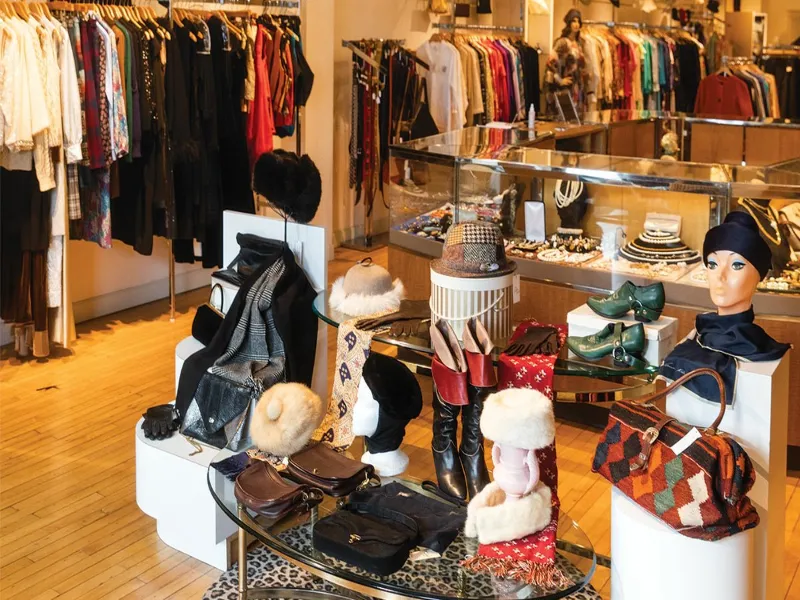
The fashion industry, the second most polluting industry in the world after the oil industry, has seen a conscious shift in shopping habits as consumers become more mindful of sustainability. The surge in vintage shopping reflects this trend.
According to data from Lyst in 2020, the term “vintage fashion” drew 35,000 search queries, underlining the growing interest and demand.
Purchasing used items instead of new ones not only lends a unique style but also significantly reduces waste, thus mitigating the fashion industry’s environmental impact. A single used item purchased over a new one can curb CO2 emissions by an average of 25% per use.
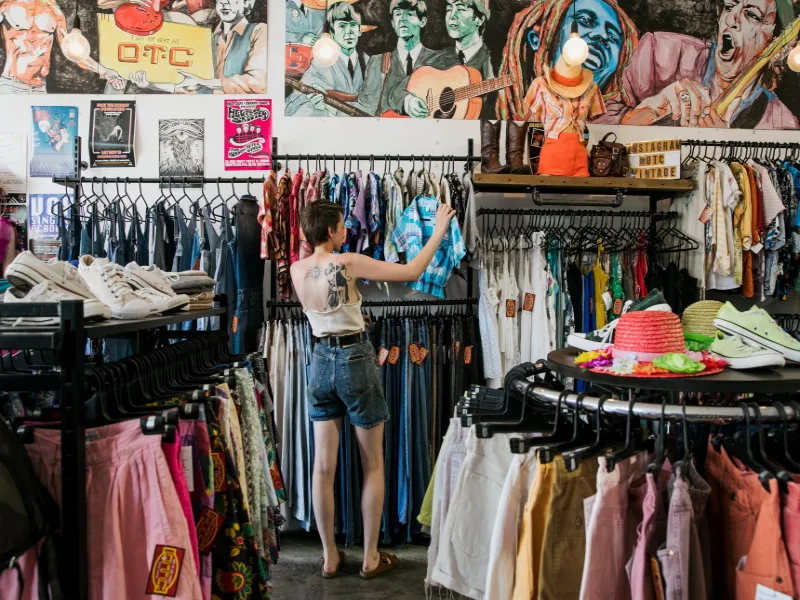
Vintage items often undergo upcycling, where modifications are made to features like hemlines to infuse a modern touch. Even worn-out vintage pieces find new life as they are salvaged and their components reused in crafting new garments.
The thriving textile recycling industry globally can repurpose over 90% of waste without generating additional hazardous waste or harmful byproducts. Thus, vintage fashion redefines sustainability, making it fashionable.
Vintage Fashion – An Eco-friendly Style
Vintage clothing represents fashion from a particular bygone era that no longer graces the shelves of contemporary stores due to ceased production.
The exclusivity and rarity of vintage clothing make it unlikely for two individuals to sport the same outfit at a particular event. Vintage garments boast unique details and craftsmanship, such as intricate beadwork, embroidery, or specific printing techniques dating back to their era. These elements are seldom found in contemporary clothing, making vintage pieces stand out.

The charm of vintage clothing extends beyond its rarity and unique design. A significant appeal lies in the nostalgia it evokes, reminding us of a time in the past.
Each piece of preserved vintage clothing has a story to tell and survived through numerous life events, adding a sense of history and character. In contrast to the mass-produced fashion we see today, wearing a piece with a rich history can be a refreshing experience.
Defining vintage clothing as apparel over 20 years old automatically qualifies it as environmentally friendly. Unlike modern fashion, which often uses materials like polyester at a substantial environmental cost, vintage pieces exist and do not contribute to further environmental degradation.
While the initial production of these items may have consumed considerable resources, reusing these pieces halts any further impact on the environment.
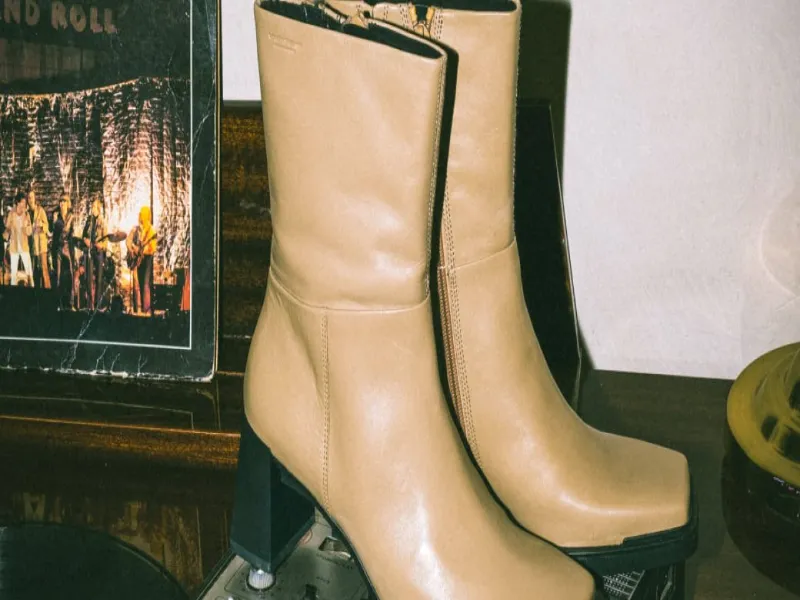
In contrast, the production process for new clothing continues to deplete our diminishing natural resources before ending up in global landfill sites. Purchasing vintage clothing promotes the reuse of fabrics, preventing them from being discarded and wasted.
The materials used in vintage clothing, such as wool, linen, and cotton, were typically sustainable and certainly warrant a second chance in someone’s wardrobe.
In this light, buying vintage clothing isn’t just a fashion statement. It’s a conscious choice to embrace a more sustainable lifestyle while appreciating the richness and character of fashion from a bygone era.
What Is Vintage Clothing? – 101 Questions For Fashionista
What Makes Vintage Clothing So Outstanding And Special?
Vintage garments are a popular choice for a variety of reasons. Their existence today is a testament to their durability, a result of superior craftsmanship and high-quality fabrics.
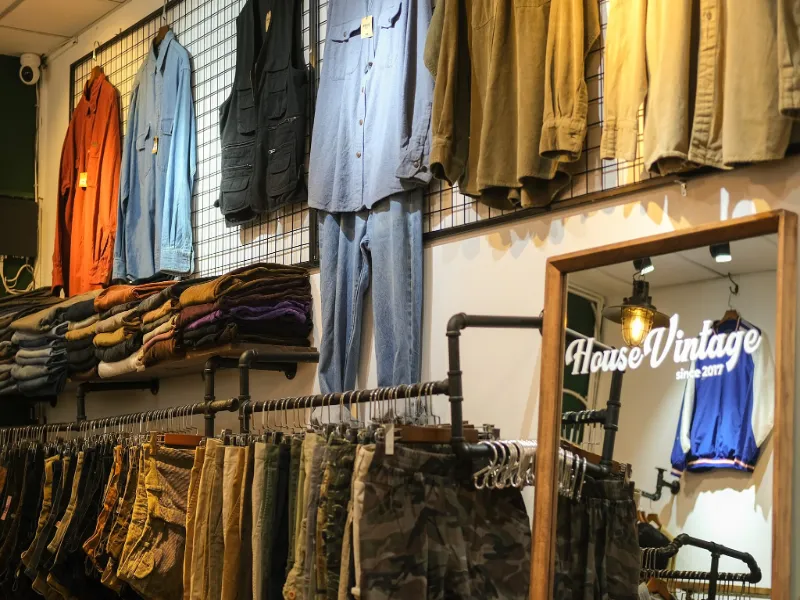
These enduring pieces stand the test of time, unlike fast-fashion items often disposed of after a single season. This durability makes vintage shopping a sustainable alternative for fashion enthusiasts who prefer investing in fewer yet higher-quality items.
By opting for secondhand clothing, we not only prevent these garments from ending up in landfills but also conserve the resources that would otherwise be spent on manufacturing new ones.
These out-of-production garments hold a unique value, offering a distinct style that sets you apart from the crowd. A vintage trench coat, for instance, is a timeless and gender-neutral piece.
The cycle of fashion activism can continue with the resale of vintage styles once you are done with them. This allows another person to find a unique piece sustainably.
Despite originating from high-end brands like Dior or Louis Vuitton, vintage items often cost a fraction of new garments.
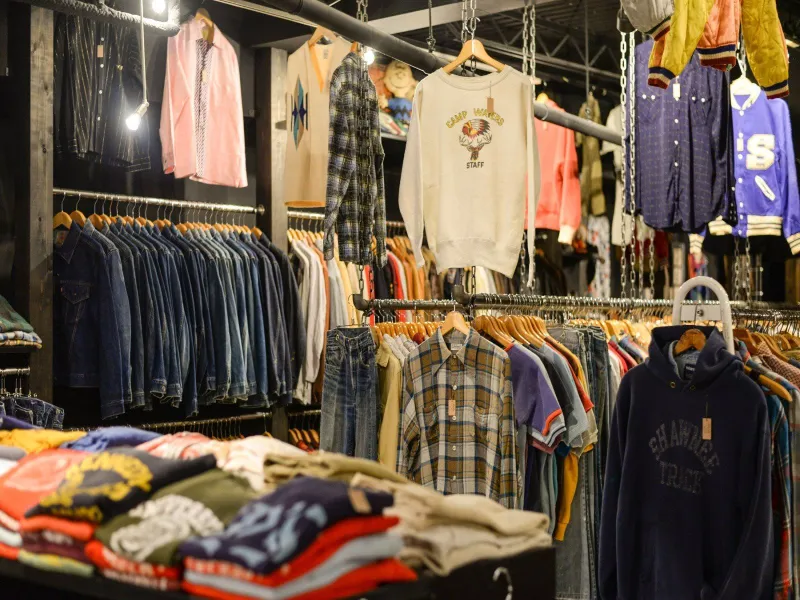
Whether you prefer a specific era in fashion or are inclined towards vintage or retro styles, they are easily accessible on our app. Its filter feature lets you discover unique pieces you didn’t realise you were seeking.
From a sustainability perspective, vintage clothing is a notch above retro clothing since it eliminates the need to produce new items.
Fashion is empowering, and secondhand fashion offers the added advantage of sustainability. Opting for secondhand versions of your favourite brands benefits the environment and is also kinder to your wallet.
You can express your unique style through pieces from different decades while making sustainable choices, finding distinctive items, and saving money.
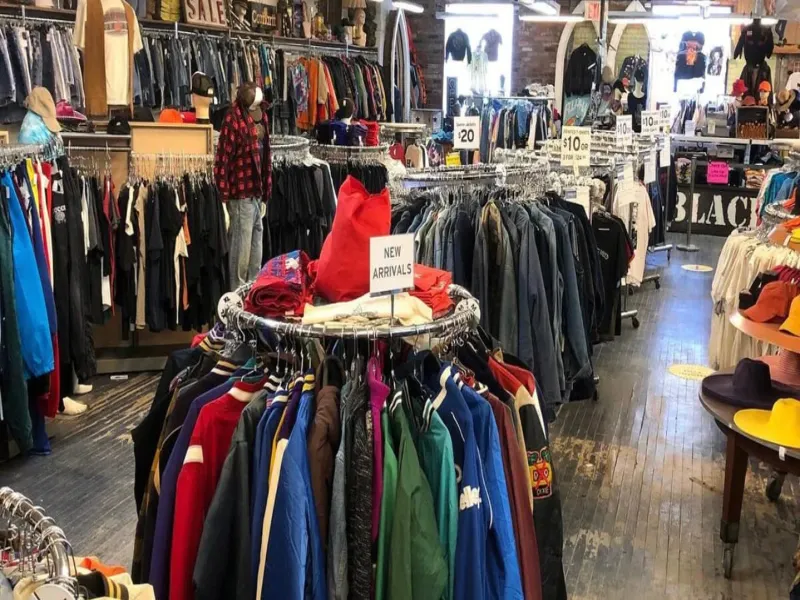
The intrigue surrounding vintage clothing can be attributed to several factors. In today’s capitalist society, fast fashion and overconsumption are the norms. The appeal of vintage clothing lies in its uniqueness, allowing you to express your style and stand out from the crowd.
Vintage garments are not just unique but also environmentally friendly. By reusing clothing, we reduce the demand for new products, curbing waste.
Most vintage clothes are of high quality and tend to outlast mass-market items. They are made from high-quality materials, ensuring their longevity.
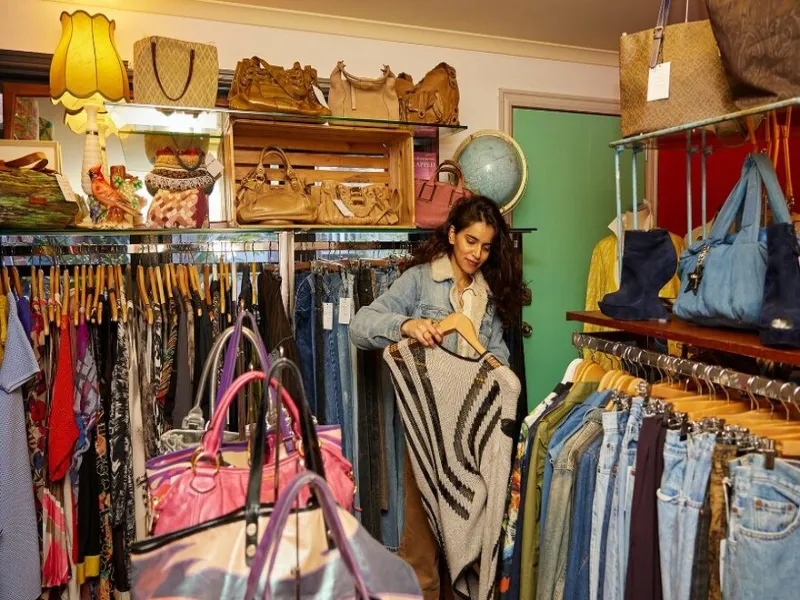
Moreover, each vintage piece comes with a story. The garment you choose may have once belonged to someone with a similar fashion sense or been a part of a special event.
So, the answer to why you should buy vintage is simple – every piece has its unique background and narrative, making your style exclusive and fascinating.
Why Does Vintage Clothing Have Better Quality?
Primarily, the fabrics employed in creating vintage clothing were innately of superior quality to what we see today. Manufacturers of yesteryears were not bound by the cost-cutting tactics of the present times. They aimed to craft garments meant to endure numerous washes and wear without falling apart, a far cry from the fleeting nature of today’s Fast Fashion.
Then comes the design aspect – vintage clothing was conceived with techniques encouraging longevity. The seams were meticulously detailed and stronger, while buttons and other attachments were firmly fixed or at least easily re-fixable.

This contrasts starkly with the modern clothing industry, which is geared towards mass production, often compromising on quality for a quick turnaround in the fashion market. This lack of attention to detail is a disheartening evolution in the clothing industry as it pivoted from durable fashion to transient trends.
Why Are Vintage Clothes More Unique?
Vintage apparel is a nod to a distinctive epoch and fashion trend, which is no longer available in contemporary retail outlets.
The cessation of production of these clothes implies a low likelihood of encountering someone donning the same vintage item as yours, such as a t-shirt or sweatshirt.
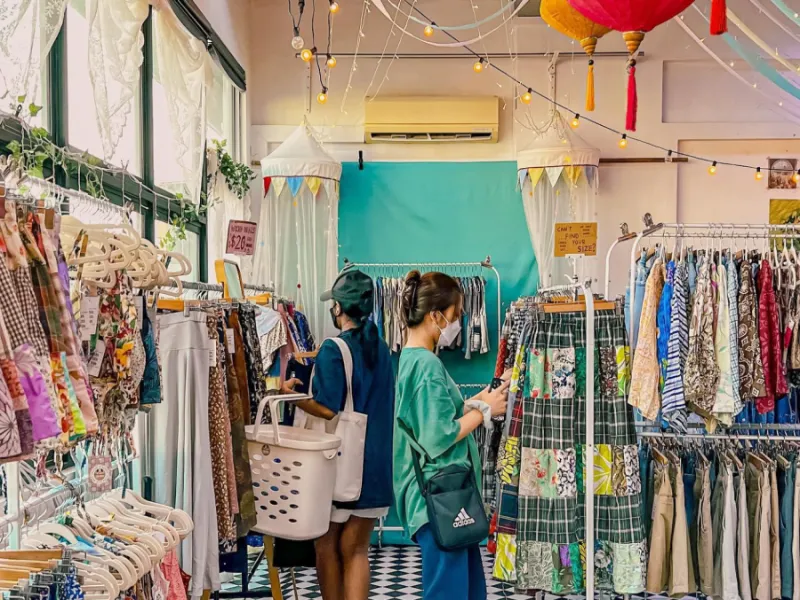
Moreover, vintage clothing is renowned for its special attributes and craftsmanship, unseen in today’s fashion. For instance, vintage frocks might feature elaborate beadwork and embroidery, while slogan sweatshirts from the era reflect the unique techniques and demands of the time.
The allure of vintage clothing extends beyond its unique characteristics. A significant aspect of its appeal lies in our yearning for days gone by.
Each piece of preserved vintage clothing tells a captivating tale, having survived the passage of time and numerous life events. Amid the influx of mass-produced fashion in the market, wearing something with a touch of history and individuality offers a refreshing change.
Why Is Vintage Clothing Still Popular In Modern Society?
Vintage clothing, cherished by fashion enthusiasts and trendsetters, offers a unique and distinctive style. In the past, clothing production focused on quality over quantity, resulting in unique pieces that stand out in today’s fast-fashion era.
The allure of vintage fashion stems from its distinct, timeless styles, from the 1970s’ low-rise pants to the 1920s’ tailored suit coats. Recent fashion exhibits showcasing vintage attire have reinvigorated interest in these classic styles.
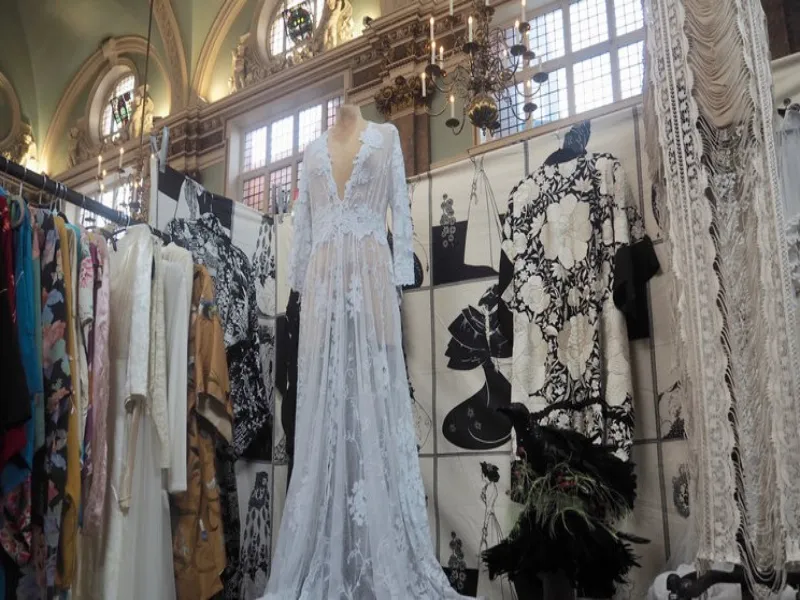
Prominent figures in the entertainment world, such as actresses Julia Roberts and Renée Zellweger, have donned vintage clothing in films, sparking a renewed fan interest in retro styles. As fans emulate their idols, sporadic trends in vintage clothing emerge.
Additionally, some modern designers are creating vintage-inspired collections, offering a more accessible and affordable option for those who appreciate vintage aesthetics. While these pieces may not be authentic vintage, they provide a variety of colours, styles, and fabrics to choose from.
Significantly, vintage clothing can lessen the environmental and economic impact of fast fashion and overproduction. Hence, investing in vintage fashion is a style statement and a way to promote sustainable living.
How Many Years Old Is An Item Become Vintage?
Vintage signifies anything that has attained a certain age. To be classified as vintage, an item must be at least 20 and above 100 years old.
Therefore, to be labelled as vintage in 2022, an item must have been produced from 1922 to 2002.
Conclusion
In conclusion, understanding “what is vintage clothing?” involves appreciating the age and historical value of the garment. With a broad window of time from 20 to 100 years old, vintage pieces are not just clothes but represent artefacts from a different era. So, when buying a vintage item, remember it’s not just a fashion statement; you also own a piece of history.

